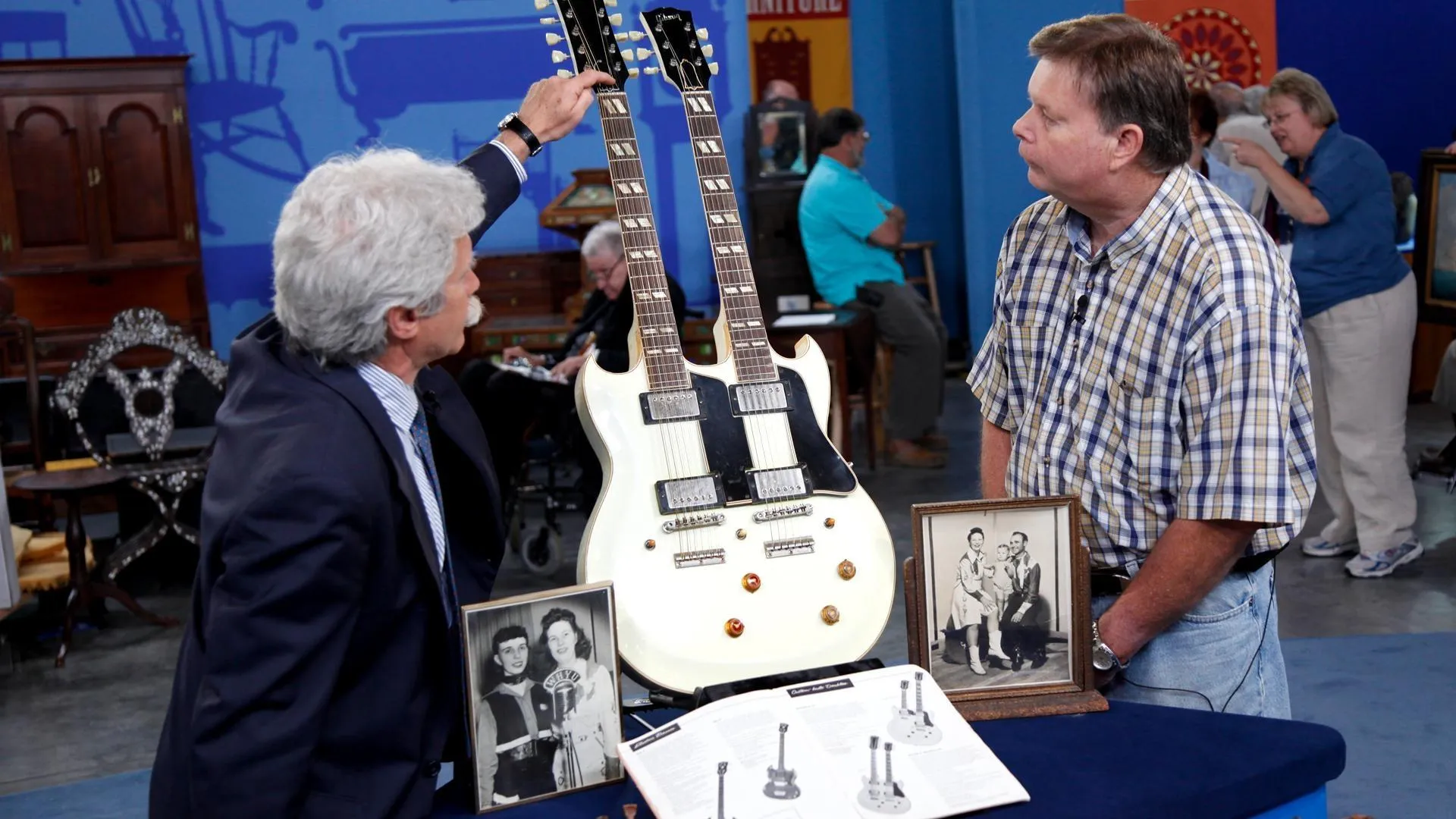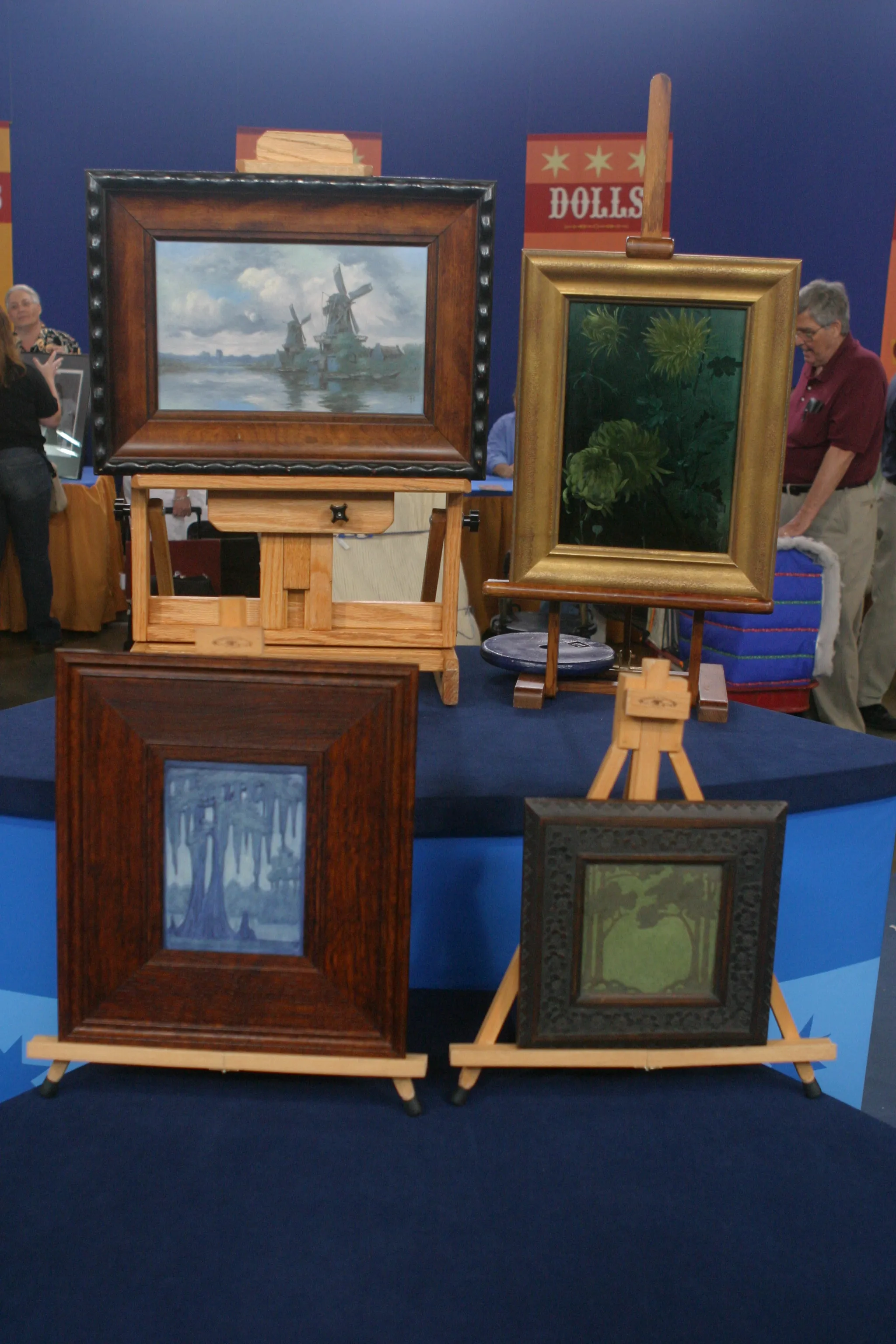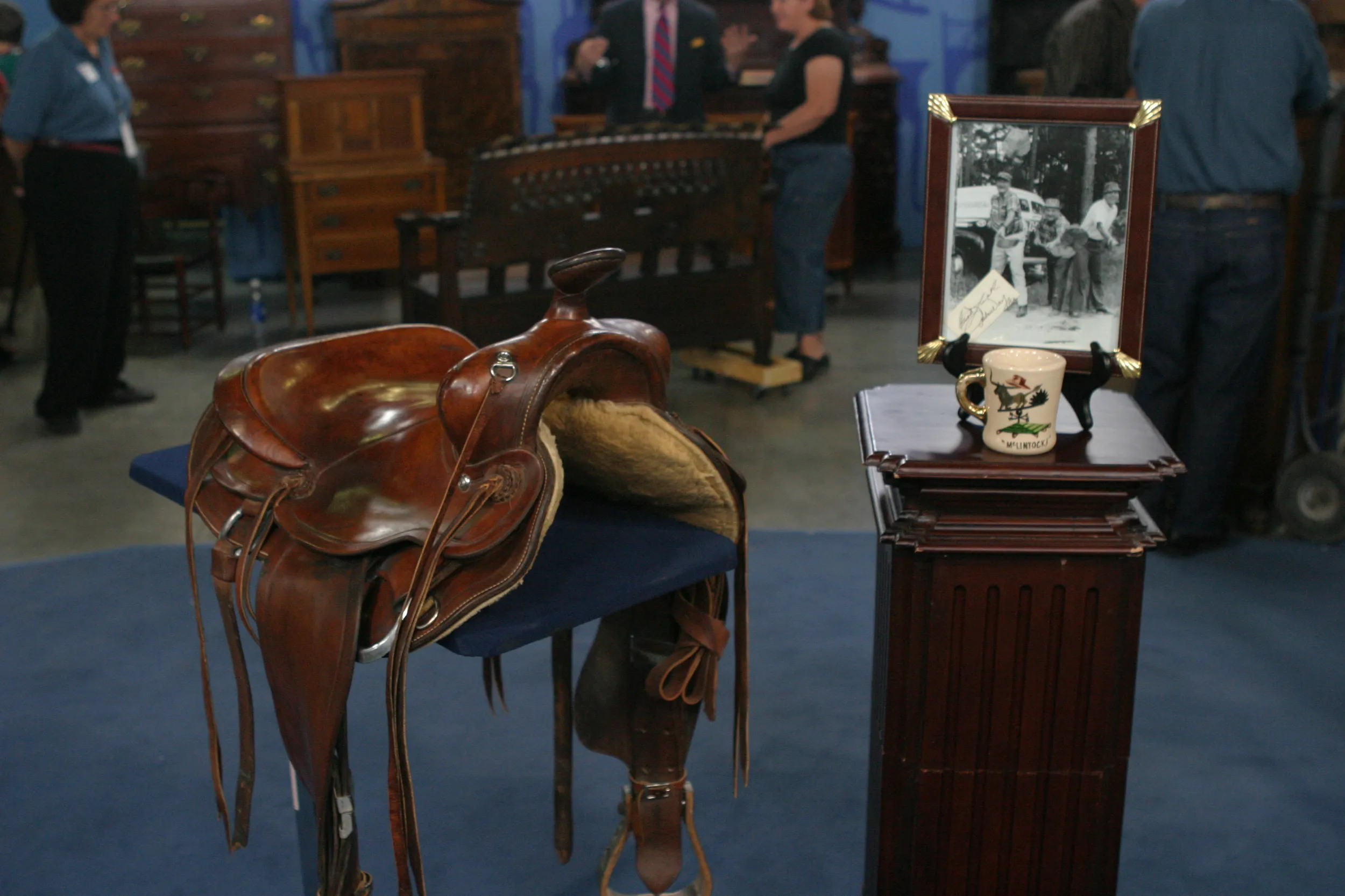GUEST: I started a job about an hour and a half from my home in Clinton, North Carolina, and it was too far to drive every day back and forth, so I found an apartment in this nice lady's home, an upstairs apartment, and when I went in to look, the first thing I saw was this, and I thought... I fell in love with it. I lived there about three or four years, and when I started to move, she says, "You know that old painting ups..."-- "picture" is what she said-- "...upstairs that you like? Well, you can take it with you if you promise not to sell it." Well, I wasn't about to sell it anyway, so that was an easy agreement.
APPRAISER: What is it that you liked about it?
GUEST: Well, I love history, and I look at their faces and it just tells a story of their emotions, and I think the person that did this just... It's marvelous how he brought out the expressions of men in war.
APPRAISER: Well, that's a very interesting thing you say that, because this is a print by a man named John Trumbull. And John Trumbull was actually a participant in the American Revolution. This is a print of the Battle of Bunker Hill, as it says. He wasn't actually at Bunker Hill. He was in Boston at the time, but he knew these men. These were colleagues of his. A lot of these images are based on firsthand drawings he did of the people who were participants. The British had long had a history of making historical prints of triumphs of the British army or navy or whatever, and John Trumbull, who was very proud to be American, decided he wanted to do a similar thing of American historical prints. And shortly after the revolution, he was going to produce a couple of prints showing these great events in the American Revolution. And he did the death of Montgomery, and then he did the Battle of Bunker Hill. And he did paintings of them which were intended to be made into prints. Now, he didn't feel at that time-- this is the end of the 18th century-- that there were American engravers who were able to do the quality that he wanted. It's quite a large print. So he went over to Europe, to London, interestingly, even though they were the ones who lost the war, and he had an engraver over there named Müller do the engraving of this in 1794. And you can see up here in little stipple dots is the name of the engraver, and 1794, which is when the engraving was made. Now, it took a little while for them to get the plate done, to get it published, so it wasn't actually published until 1798, and it was done by a man named de Poggi in London. And you can see down here is the name of the publisher and the date, and John Trumbull's name is down here. So we're talking about an 18th-century engraving of an 18th-century battle by a man who was in the vicinity, was in the war. So it's as authentic as you get. Now, obviously one of your concerns is condition.
GUEST: Absolutely.
APPRAISER: You have quite a bit of foxing spots here. You have some water damage on the far margin over there, and then you have some area where it's actually worn. This line along here is called the plate mark. That's where the copper plate pressed into the paper, so it's thinner there. And you can see over here, it's actually broken through. Now, the paper on this is very good. It's 18th-century paper. So the paper itself is good. Bad things have been done to it. If it's treated well by a professional, you can make it look almost like new. And with prints, unlike furniture, which aren't necessarily going to die if you don't fix them, a print, this will die. It will crumble. It will get worse and worse. So it is very important that you fix it up. But even in this condition, I would insure this for about $5,000. So a fairly substantial amount, even in this condition. It would probably cost you, I would think, $500 or $600 to fix it up if you were going to restore it with a professional. But that would probably add about $1,500 onto the value of the print, so it's well worth doing it.
GUEST: Thank you. That's wonderful.









